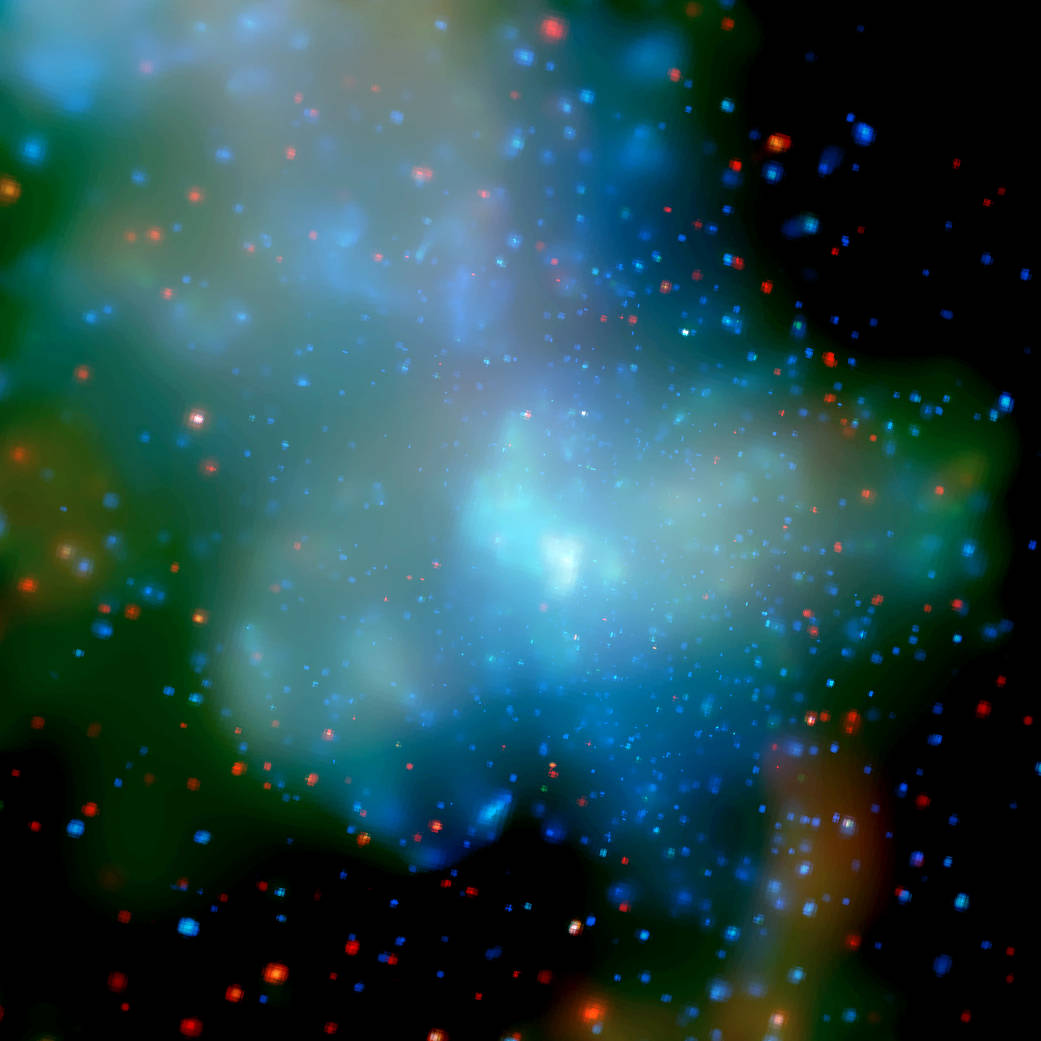This 2004 image was produced by combining a dozen observations from the Chandra X-Ray Observatory made of a 130 light-year region in the center of the Milky Way. The colors represent low (red), medium (green) and high (blue) energy X-rays. Thanks to Chandra’s unique resolving power, astronomers have now been able to identify thousands of point-like X-ray sources due to neutron stars, black holes, white dwarfs, foreground stars, and background galaxies. What remains is a diffuse X-ray glow extending from the upper left to the lower right, along the direction of the disk of the Galaxy.
The spectrum of the diffuse glow is consistent with a hot gas cloud that contains two components – 10-million-degree Celsius gas and 100-million-degree gas. The diffuse X-rays appear to be the brightest part of a ridge of X-ray emission that stretches for several thousand light years along the disk of the Galaxy. The extent of this ridge implies that the diffuse hot gas in this image is probably not being heated by the supermassive black hole at the center of the Milky Way, known to astronomers as “Sgr A*”.
Chandra is part of NASA’s fleet of “Great Observatories” along with the Hubble Space Telescope and the Spitzer Space Telescope. Chandra allows scientists from around the world to obtain X-ray images of exotic environments to help understand the structure and evolution of the universe.
Image Credit: NASA/CXC/UCLA/MIT/M.Muno et al.
这张2004年的图片是由钱德拉X射线天文台对银河系中心130光年的区域进行的十几次观测组合而成的。这些颜色代表低能量(红色)、中能量(绿色)和高能量(蓝色)X射线。由于钱德拉独特的分辨能力,天文学家现在已经能够识别数以千计来自中子星、黑洞、白矮星、前景星和背景星系的点状X射线源。剩下的是沿银河系盘面方向从左上方延伸到右下方的弥漫性X射线光辉。
弥漫光辉的光谱与热气云相一致,它包含两个组成部分——1000万摄氏度的气体和1亿摄氏度的气体。弥漫性X射线似乎是X射线发射山脊中最亮的部分,它沿着银河系的盘面延伸了几千光年。这条山脊的范围意味着这张图片中的弥漫性热气体可能没有被银河系中心的超大质量黑洞(天文学家称之为Sgr A*)所加热。
钱德拉与哈勃太空望远镜和斯皮策太空望远镜一样,都是NASA“伟大天文台”的一部分。钱德拉允许来自世界各地的科学家获得异域环境的X射线图像,以帮助了解宇宙的结构和演变。
影像来源:NASA/CXC/UCLA/MIT/M.Muno et al.







